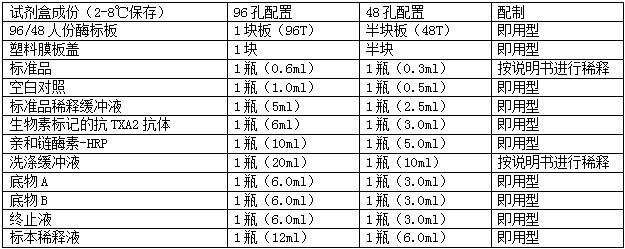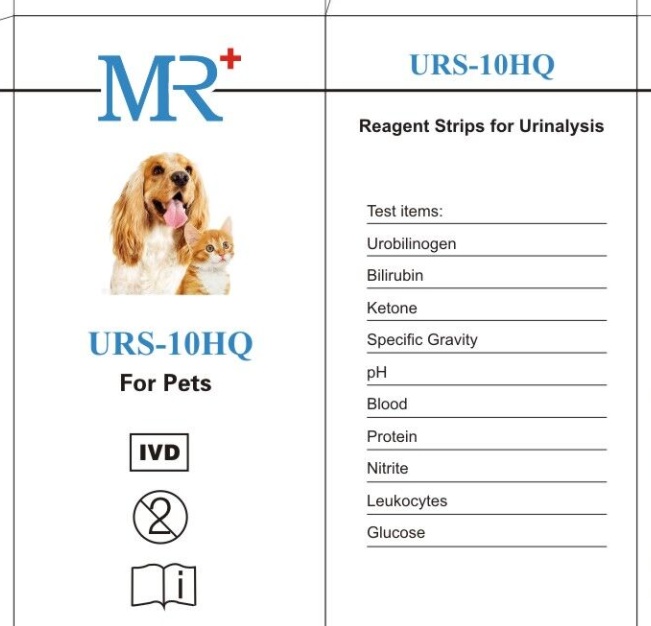Guinea pig follicle stimulating hormone (FSH) ELISA kit
The guinea pig follicle stimulating hormone (FSH) ELISA test kit is a solid phase sandwich immunosorbent assay (ELISA). Standards with known concentrations of the test substance and samples of unknown concentration are added to the microwell microplate for detection. The test substance and the biotin-labeled antibody are first incubated simultaneously. After washing, avidin-labeled HRP was added. After incubation and washing, then add substrates A, B,
Kit content and its preparation 
Self-contained materials
1) Distilled water.
2) Sampler: 5ul, 10ul, 50ul, 100ul, 200ul, 500ul, 1000ul.
3) Oscillator and magnetic stirrer.
safety
1) Avoid direct contact with the stop solution and substrates A, B. Once exposed to these liquids, rinse with water as soon as possible.
2) Do not eat, drink, smoke or use cosmetics during the experiment.
3) Do not use the mouth to absorb any ingredients in the kit.
Operational precautions
1) Reagents should be stored according to the label instructions and returned to room temperature before use. Standards after dilution should be discarded and cannot be stored.
2) The slats not used in the experiment should be immediately put back into the packaging bag and sealed to avoid deterioration.
3) Other reagents that are not used should be packaged or covered. Do not mix reagents of different batches. Use before warranty.
4) Use a disposable tip to avoid cross-contamination. Avoid pipettes with metal parts when drawing stop solution and substrate A and B.
5) Configure the wash solution using a clean plastic container. Mix all the ingredients and samples in the kit thoroughly before use.
6) When washing the enzyme plate, fully pat dry, do not put the absorbent paper directly into the enzyme standard reaction well to absorb water.
7) Substrate A should be volatilized to avoid opening the lid for a long time. Substrate B is sensitive to light and avoids prolonged exposure to light. Avoid contact with hands and be toxic. The OD value should be read immediately after the experiment is completed.
8) The order of addition of reagents should be consistent to ensure that all wells are incubated for the same time.
9) The incubation operation is carried out according to the time indicated in the instruction manual, the amount of liquid addition and the order.
Sample collection, processing and storage methods
1) Serum ---- Avoid any cell irritation during the procedure. Use tubes without pyrogens and endotoxins. After collecting the blood, the serum and red blood cells were quickly and carefully separated by centrifugation at 1000 x g for 10 minutes.
2) Plasma-----EDTA, citrate, heparin plasma can be used for detection. The pellet was removed by centrifugation at 1000 x g for 30 minutes.
3) Cell supernatant - 1000 x g was centrifuged for 10 minutes to remove particles and polymer.
4) Tissue homogenization-----The tissue is added to the appropriate amount of physiological saline and mashed. Centrifuge at 1000 × g for 10 minutes, take the supernatant
5) Storage ------If the sample is not used immediately, it should be divided into small parts - 70 °C to avoid repeated freezing. Do not use hemolysis or hyperlipemia as much as possible. If there are large amounts of particles in the serum, centrifuge or filter before testing. Do not heat thaw at 37 ° C or higher. It should be thawed at room temperature and ensure that the sample is fully thawed evenly.
Reagent preparation
1) Standard: The serial dilution of the standard should be prepared during the experiment and cannot be stored. Mix the standard shakes before dilution.
2) Dilution of washing buffer (50×): 50-fold dilution of distilled water.
Steps
1) Mix all reagents thoroughly before use. Do not allow the liquid to generate a large amount of foam, so as to avoid adding a large amount of air bubbles during the loading, resulting in errors in the loading.
2) Determine the number of slats required based on the number of samples to be tested plus the number of standards. Multiple holes are recommended for each standard and blank hole. Each sample is determined according to its own quantity, and it is possible to use the double hole as much as possible to make a double hole. The specimen was diluted 1:1 with the specimen dilution and 50 ul was added to the reaction well.
3) Add 50 ul of the diluted standard to the reaction well, and add 50 ul of the sample to be tested to the reaction well. Immediately add 50 ul of biotinylated antibody. Cover the membrane, mix gently by shaking, and incubate for 1 hour at 37 °C.
4) Remove the liquid from the well, fill each well with the washing solution, shake for 30 seconds, remove the washing solution, and pat dry with absorbent paper. Repeat this operation 3 times. If washing with a washer, the number of washings is increased once.
5) Add 80 ul of affinity streptavidin-HRP per well, mix gently by shaking, and incubate at 37 ° C for 30 minutes.
6) Remove the liquid from the well, fill each well with the washing solution, shake for 30 seconds, remove the washing solution, and pat dry with absorbent paper. Repeat this operation 3 times. If washing with a washer, the number of washings is increased once.
7) Add 50 ul of each of the substrates A and B to each well, mix gently by shaking, and incubate at 37 ° C for 10 minutes. Avoid lighting.
8) Remove the microplate and quickly add 50 ul of stop solution. Immediately after adding the stop solution, the results should be determined.
9) The OD value of each well was measured at a wavelength of 450 nm.
Guinea Pig Follicle Stimulating Hormone (FSH) ELISA Kit
The results above the No. 6 standard are non-linear and no accurate results can be obtained from this standard curve.
1.50 Test Strips Per Bottle
2.Urobilinogen, Glucose, Bilirubin, Ketone (acetone, acetoacetic acid), Specific Gravity, Blood, pH, Protein, Nitrite, Leukocytes
3.10 Parameter Veterinary Urine Test
4.Four languages, English, French, German or Spanish (instructions in English)
5.Specific Gravity range more suited to animals

[Test Principle]
Urobilinogen:Urobilinogen with diazonium salt produce red violet dyes in strong acid medium.
Bilirubin:The direct bilirubin with dichlorobenzene diazonium produce azo dyes in acid medium.
Ketone:The acetoacetic acid and sodium nitroprusside cause reaction in alkaline medium,which produces red violet compound.
Blood:Hemoglobin acts as peroxidase. It can cause peroxidase release neo-ecotypes oxide (O).(O) oxidizes the indicator and make the color change subsequently.
Protein:It is based on a specific pH indicator attracted by cation on protein molecule,the indicator further ionized and make the color change.This phenomenon is called protein-error-of -indicator principle.
Nitrite:Nitrite and aromatic amine are diazotized to form a diazonium compound.The diazonium compound reacts with tetrahydrobenzo(h)quinolin 3-phenol produce the red azo dye.
Leukocyte:Pyrrole amino acid ester produce free phenol under the hydrolysis of esterase in neutrophile granulocyte,the free phenol couple with phenyl diazonium salt produce purple azo dyes.
Glucose:The glucose oxidized by glucose oxidase catalyzes the formation of glucuronic acid and peroxide hydrogen.Peroxide hydrogen releases neo-ecotypes oxide(O)under the function of peroxidase.(O)oxidizes tetramethyl benzidine, which make the color change.
Specific Gravity:Methyl vinyl ether and maleic acid copolymer is weak acid (-COOH) exchanger,the M+ cation (the major is Na+) in urine reacts with the exchanger and release hydrogen ion,hydrogen ion reacts with indicator produce color change.
pH:The method of pH indicator is applied.
Ascorbic Acid:Ascorbic acid deoxidizes the 2.6-dichlorphenolindophenol dye into colorless in alkaline medium.
Microalbumin:Sulfone phthalein dye has high sensitivity to microalbumin by the method of protein error.
Creatinine:Creatinine with 3,5-Dinitrobenoic acid produce violet compound in alkaline medium.
Calcium:Calcium ion reacts with methyl bromothymol blue produce color change in alkaline medium.
Urine Strips For Pets,Reagent Test Strips For Animal,Reagent Test Strips For Pet,Dog Urine Test Strips
Changchun ZYF science and technology CO.,LTD , https://www.zyf-medical.com